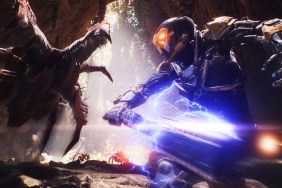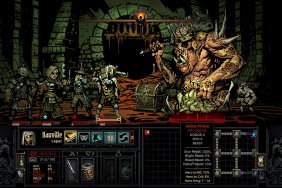I’m not sure Conception 2: Children of the Seven Stars is something I feel equipped to accurately describe. Then again, that’s probably true for everyone. It’s basically… a dating sim dungeon-crawler? Sexytime post-apocalyptic teenage defense seminary? Futuristic fantasy child-battler? Regardless of what you call it, Conception 2 is probably going to feel a lot like the Persona series mixed with those racey animes folks like to stream on Crunchyroll, and I still have no idea if that’s a good thing. It has issues, but somehow Conception’s adulterated blend of action, interaction, and fanservice finds a way to work. More power to it, I say.
The premise of the game is nothing terribly new for JRPGs, featuring a cast of adolescent characters summoned to help put down a mounting evil that threatens the world. Rather than a chosen crew of snarky globetrotters, though, an entire school of teens have instead been called to an academy built specifically for training them to fight monsters. It sounds cool, but the early development of the plot is incredibly slow and silly in its presentation — the good stuff comes later.
Luckily, there’s plenty to do while you wait for the story to heat up, and one of Conception 2’s main tasks is, well, actually conceiving. You know, making babies. It’s not possible to defeat hordes of monsters on your own, after all, and the quickest way to take them down is to assemble a crack-squad of Star Children to fight by your side. By “classmating” with seven different heroines attending the academy (some of whom are teachers), the player can experiment with different Star Child configurations. This allows access to various job classes once they’re born, among other tweaks depending on who the mother was.

The Star Maidens aren’t going to let you put your baby in their Matryoshka without a fight, though (don’t worry, it’ll make sense when you play), and getting to know them through conversation is a major component of the game. There are four heroines available to start, and as the game progresses more are unlocked via the story. That said, there are troves of conversation to be had with just the initial four, and though their personalities vary from genuinely interesting to almost offensively trite, there’s funny and often well-acted dialog to be had regardless of who you spend your time with.
Perhaps more impressive, these bonding segments are the most visually engrossing part of the game, especially on 3DS. While much of Conception 2 makes use of a fairly generic anime art style (sans stereoscopic 3D, I might add), the time spent bonding with heroines uses an entirely different engine. Not only are the Star Maidens rendered in impressively detailed polygonal 3D, but the 3DS’ screen is put to full use as well. Aside from maybe Super Mario 3D Land, these segments are the most impressive use of 3DS’ autostereoscopic abilities I’ve yet seen, and should not be missed. Since having 3D on effectively doubles the resolution (400 x 240 for each eye), there’s a boost in clarity and overall fidelity that you won’t want to miss out on. Regardless of which heroine you’re interacting with, it’s going to look excellent.
So, why exactly are all of these heroines willing to make Star Children with you? It’s a bit involved, but the player character is something called a God’s Gift; essentially, his power is such that he can venture into monster-ridden areas called Dusk Circles unharmed, and is able to attack monsters where others normally wouldn’t. Because of this, he also has a 100% success rate when attempting to create a Star Child — a rate that normally sits in the single digits.

I mentioned selecting job classes, but there’s a lot more to pimping out your team of Star kids than meets the eye, and it can actually get pretty complicated. The game has an entire catalogue of weapons and gear, some of which are found in dungeons and some of which can be purchased. At first I tried to manually equip everything, but it got to be a bit much; eventually I just used the “auto” feature to assign my best gear to the appropriate Star Children. You can also have the game make a similar call for assembling your actual Star Child teams, which works satisfactorily as well.
Dungeon-crawling is where some players may fall off the bandwagon, as it can get rather repetitive despite the depth of the combat system. Labyrinths are randomly generated each time you enter, which is a plus, but the layouts become predictable quickly. Beyond that, the graphics during these sections are downright bad. Characters look stiff and lifeless, while the Star Children mill about in seemingly random directions while yelling displaced affectionate phrases to their parents. It’s nice when young Django the Gunslinger (custom names are allowed) yells “I love you!” to his daddy, but when daddy has helped create approximately 47 other Star Children, it’s tough to feel any real connection. Bonding with the heroines? Sure, it’s great. But with the Star Children themselves? Not so much.
Battles are where the Star Children are most useful, though, and you’ll be able to customize them in interesting ways to suit your needs. The main tactic while fighting is determining from which direction you’ll ambush an enemy, and though it’s not terribly hard to master, keeping tabs on enemy weak points via this method goes a long way in breaking the monotony of battle. Beyond that, Star Children (and heroines) acquire news skills as they level up, and will gain access to additional team abilities depending on how they’re paired. There’s tons to uncover if you’re willing really sink your teeth in, but if not, you should still be able to progress just fine using basic techniques. The choice is essentially yours.
Unfortunately, Conception 2’s jack-of-all-trades standing plays a part in much of its undoing, as most gameplay elements outside of combat end up wearing a bit thin after about 20 hours. As much as I love the visuals during heroine bonding, the allure of the various conversations is extremely inconsistent. Some are fully voice acted and hop between multiple locales, while others inexplicably use only text and consist of mundane smalltalk. Additionally, the characterization is a bit wonky, and may even offend some players with its broad-brushing of traits like low self-esteem or sexual inexperience onto nearly every heroine in the game. Still, the degree to which such traits are applied does vary, and for every Nariko (a character I found a bit too “male gaze” for comfort), there’s a Fuuko to restore balance with interesting dialogue and, more importantly, a sense of identity beyond serving God’s Gift. Conception is no narrative masterpiece, but it does have its fleeting character moments, some of which border on sublime.
That’s pretty much Conception 2 for you. I should stress, if I haven’t enough already, that the game’s plot is pretty much utterly ridiculous. It’s an excuse for the game’s insane design document to make any kind of sense, and it achieves that purpose, but little else. Still, the resulting scenarios are often entertaining, and the moment I knew Conception 2 had won me over was when I actually laughed at a joke made by in-game buddy Chlotz, a character I found incredibly annoying for the longest time. I honestly can’t say whether or not the game improved or if I just warmed up to it over time, but it makes sense that something as strange as a dungeon-crawler dating and procreation sim can’t just be assimilated overnight. Some games are an acquired taste, and Conception 2 is about as stubborn as they come.

Griffin Vacheron is a Writer for CraveOnline. You can follow him on Twitter @novacav.
3DS copy provided by publisher. Conception 2: Children of the Seven Stars is available on Vita and 3DS..







